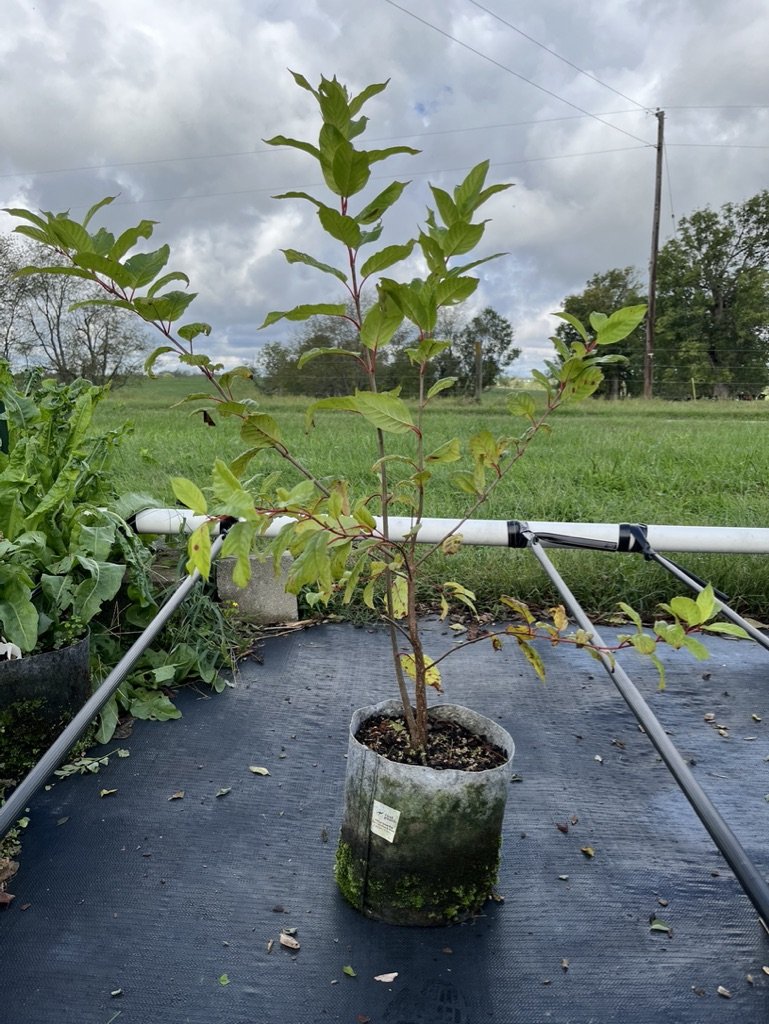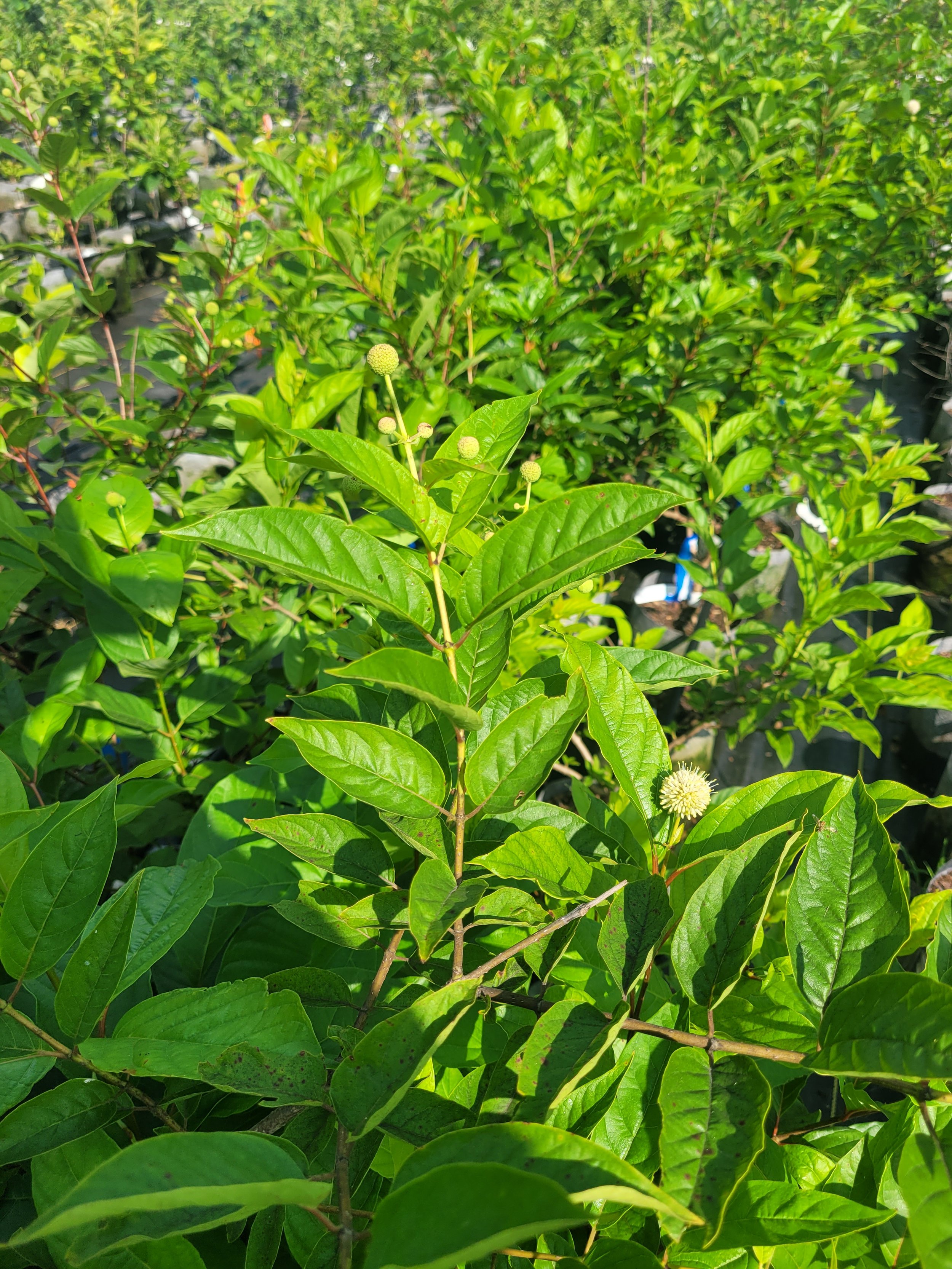AVAILABLE FALL 2025! Buttonbush (Cephalanthus occidentalis)



AVAILABLE FALL 2025! Buttonbush (Cephalanthus occidentalis)
$22.00
Sun: full sun, can tolerate partial shade (sensitive to deep shade)
Soil: tolerant to a variety of soil types, well drained or wet soil
Growth rate: medium to fast (1-2 ft/yr)
Mature size: 5-8 ft. tall
Landscape use: wet areas, edges of streams, attracting butterflies, moths, bees, and birds
Fruit: round red nutlets hanging down (October)
Flower: small round ball-like cluster of white flowers, known as “globe-flower” and “honey-balls”
Fall color: yellow
Seasonal interest: unique flowers; red nutlets;
Sustaining wildlife: attracts more than 24 species of birds (including Robin, and Hummingbird), numerous species of butterfly like the Tiger Swallowtail
Quantity: